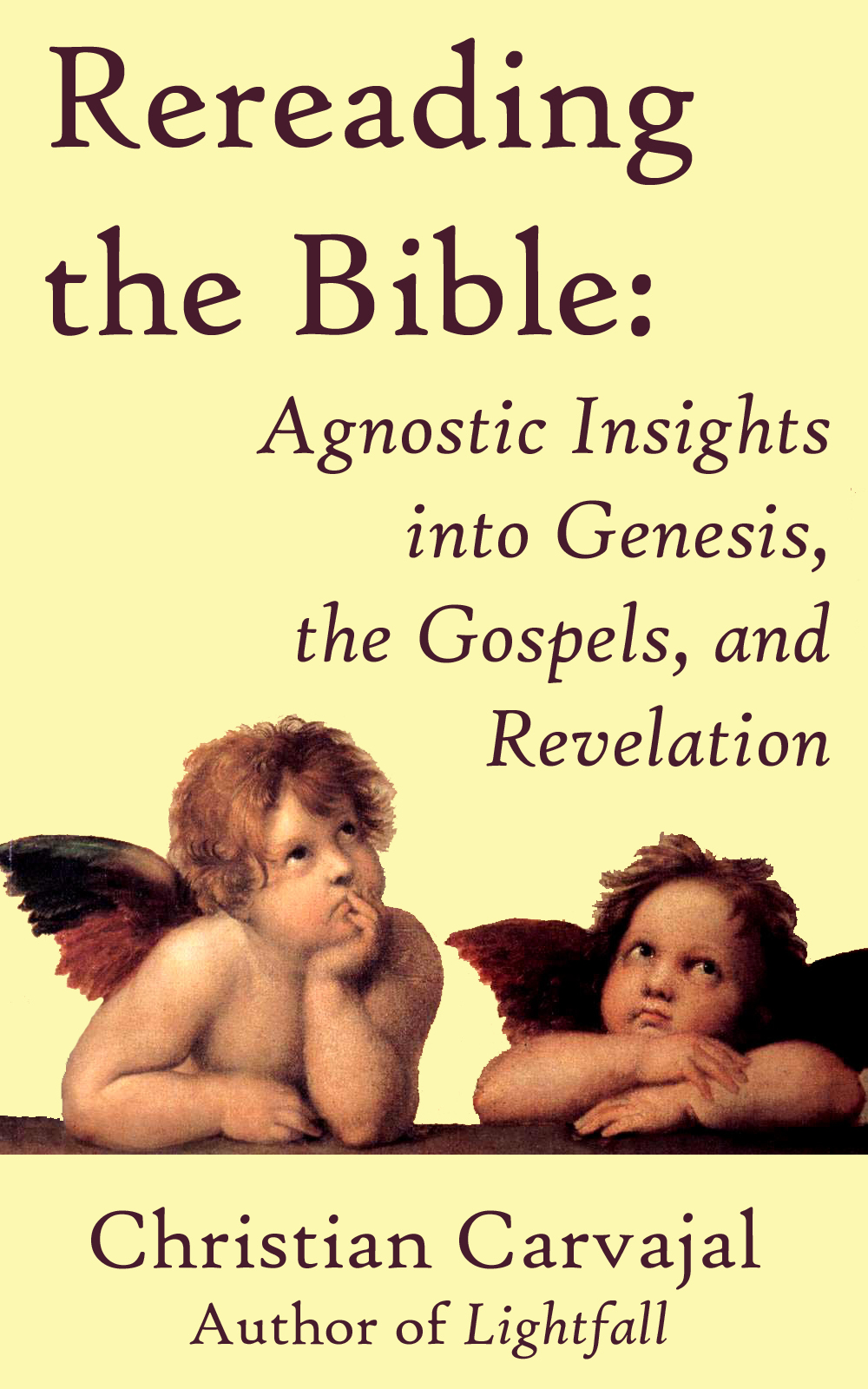Starstuff
I read a lot of news magazines in the summer of 1980. I had only just turned 12, but I was soaking up information about The Empire Strikes Back because my dad insisted we should wait till a family trip to L.A. to see it at the drive-in. I imagine that's how I first heard about Cosmos, a show about science that would air on PBS in September. It promised to use new "video technology" to make science more exciting and compelling than ever before. The host was an urbane fellow I'd seen on The Tonight Show, a patch-elbowed academic with a hyponasal voice and distinctive way of pronouncing the word "human." That charismatic personage was Dr. Carl Sagan. His TV series would do much to change the course of my life.
It was Dr. Sagan who first showed me evidence for natural selection in a positive, non-combative way. I'd never seen that before. Oh, sure, I'd had plenty of exposure to the theory of evolution, but always at the hands of folks who were dead set against it. Dr. Sagan began by blowing my mind with the cosmic scale of timespace, then rebuilt my worldview from the ground up by showing me how nature used its enormous breadth of time and space to full, rich effect. Without the supernovae that spattered dense guts of stars across the universe, Dr. Sagan explained, the calcium and iron in my blood and bones could not exist. "We," Dr. Sagan insisted, "are made of starstuff. We are a way for the Cosmos to know itself." There's no coming back from a statement like that. It makes all of us cousins to everything.
Things that didn't exist when Cosmos's 13 unforgettable episodes first aired: the Internet. Dr. "Indiana" Jones. Justin Timberlake. Panera Bread. Epcot. MTV. Natalie Portman. The IBM PC. Beyonce. Things that did: Mork & Mindy. Bob Marley. Sambo's restaurants. Natalie Wood. Snail mail correspondence. Rotary phones. Planet Pluto. The world has experienced such a paradigm shift over the last 34 years, all at the hands of technology, that you'd think our knowledge of science would've expanded along with it. It hasn't. Most of us think of science as a punishing subject we struggled through in high school by cheating off the kid with the Trapper Keeper notebook. Any molecular residue of scientific reverence or joy has been beaten out of us by apathetic, inarticulate babysitters masquerading as teachers. We need Cosmos now more than ever.
So here it is. Dr. Neil deGrasse Tyson, director of the Hayden Planetarium and frequent Daily Show guest, is stepping into Dr. Sagan's comfy loafers beginning this Sunday night. Ann Druyan, Dr. Sagan's widow and writing partner, is writing for Cosmos: A Spacetime Odyssey as well; it's produced by, of all people, Seth "Family Guy" McFarlane. Based on an advance screener of the pilot episode, Dr. Sagan's legacy is in the best possible hands. If you don't believe me, wait for the closing moments of that hour.
"The Cosmos," a familiar voice explains in the pilot's opening seconds, "is all that is, or ever was, or ever will be." A hand releases dandelion fluff into the air, and it whizzes past Dr. Tyson on a picturesque bluff. That fluff will be a recurring image in the pilot episode, reminding us older folks of Dr. Sagan's scintillating "ship of the imagination."
"It's time to get going again," Dr. Tyson announces, smiling, and off we go. After a quick summary of the scientific method, we're whisked on a tour of the solar system and beyond. Do you know your cosmic address? You will 15 minutes later. You'll also be looking around the room for the top of your head, which popped off somewhere back around the Virgo Supercluster. "Feeling a little small?" Dr. Tyson asks. "We may just be little guys living on a speck of dust floating in a staggering immensity, but we don't think small." He proves this by taking us back to "New Year's Eve of the year 1600," where a hero of mine, a "natural-born rebel" named Giordano Bruno, is languishing in an Inquisition prison cell.
Casual viewers will find themselves offended here, as the next few minutes address fundamentalist opposition to science directly. But if religious adherents listen closer, they'll discover a man who believed in God fervently. Bruno argued, not that God didn't exist, but that our conception of Him is off by galactic orders of magnitude. Bruno's "lucky guess" about the immensity and transcendence of Creation was even truer than he knew.
If Dr. Tyson's exploration of space didn't make you feel small enough, he uses an updated version of Dr. Sagan's "cosmic calendar" to compress all 13.8 billion years since the Big Bang into a single 365-day year. If you had to guess, on how many such calendar days would you expect to find human beings? Let's put it this way: our species's wardrobe wouldn't need autumn flannels.
"I learned from Carl the kind of person I wanted to become," Dr. Tyson remembers. Dr. Sagan would be proud, of both his student and his groundbreaking series's namesake. Throughout this pilot episode, Dr. Tyson's hushed voice reflects a reverence for nature--the same awed, diminished, expanded, illuminated worldview we gain from watching Planet Earth or the original Cosmos or, I suspect, giving birth. This is a show you should watch with your children. You and they will enjoy it; you and they will learn much; you and they will be stunned. This is top-drawer, spectacular entertainment that makes us all better, smarter people. I can't wait to geek out with the rest of you here about upcoming episodes.
Sunday at 8 p.m. on Fox--simulcast on NatGeo and eight other channels, including HD
 Print This Post
Print This Post





Leave a comment